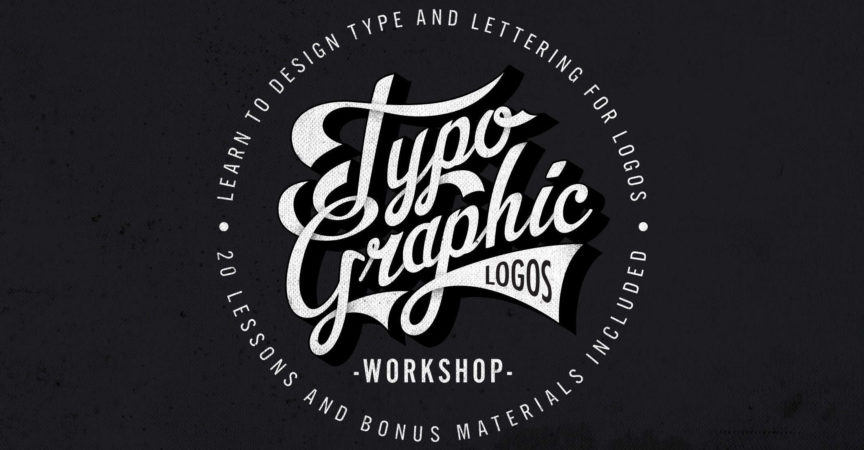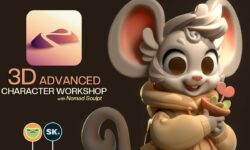Typographic Logos – Typography and Lettering for Logo Design – Ray Dombroski
Release date:2019
Duration:01 h 31 m
Author:Ray Dombroski
Skill level:Beginner
Language:English
Exercise files:Yes
Type-based logos, also known as logotypes and wordmarks, are a powerful way to define the style of your brand. Creating custom lettering (instead of using a pre-built font) is your opportunity to make something truly unique.
Whether you need to design custom lettering for a company logo, a t-shirt, advertising, or your own personal brand, I’ll show you how to find inspiration, sketch out your rough ideas, refine your design and bring it into the computer. From there, you will learn how to create color options and add in some shading and texture.
In the class, I’ll walk you through how to start from (chicken) scratch to create this logo. After that, it’s your turn to find your own style and show the world what you can make!
Class Outline
Welcome. In this typography tutorial, you’ll learn how to design a typeface logo – all the way from ideation to final product. The logos you’ll explore in this class can function for companies, t-shirts, product packaging, and book covers. Discover how to create your own design style with type-based logos instead of using the best website font you can find. Use this class to craft your own creative aesthetic from start to finish.
Why Make Custom Lettering? You’ll learn the basics of different typeface design varieties. You’ll often use clean vector designs for corporate logos — since they can shrink to the size of a business card, and expand to the side of a building. When it comes to t-shirt designs or more casual logos, you can more easily opt for hand-drawn options.
What is typography? Typography includes the entire alphabet, both in uppercase and lowercase. You’ll also learn the difference between:
A font and a typeface
Lettering and typeface
A logo mark and a logotype
The Business of Logo Design. You’ll find out how much you can charge for your logo design. While a typical t-shirt design goes for around $400, you’ll see that corporate logos can be a lot more lucrative. From Paul Rand’s pricey design for Steve Jobs to the surprisingly cheap Nike swoosh logo, you’ll learn just how wide a payment range can be.
Getting Inspired. You’ll learn the value of emulation (along with whom not to emulate). You’ll also learn how to take existing lettering fonts and font families, and create something new. You’ll also see how platforms like Pinterest can inspire you. Finally, you’ll discover how to apply what inspires you, and make it your own.
Analog and Digital Tools. From copy paper and mechanical pencils to bitmap textures and Photoshop brushes, you’ll get a tour of the best materials to use for creating your typographic logo.
Thumbnails and Bringing Your Design to Your Computer. You’ll learn the three main types of letterforms, and watch as Ray imports a hand-drawn sketch into the computer. Then he’ll print out a sketch on paper. Then you’ll learn a couple of key “design school” tricks.
Make and Refine Vector Lettering. Using as few points as possible to create your vector letters, you’ll refine this version of your logo by printing it out (again), checking for negative space, and brushing up on small details.
Adding Shading and 3D Effects. You’ll learn tricks for incorporating shading in Illustrator, such as layers, gradient libraries, the knife tool, and the divide tool. To add 3D effects, you’ll check out the blend tool, and learn how to clean up your designs from there.
Colorways, Bitmap Textures, and Photoshop Brushes. After merging color with the design you’ve created in Illustrator, you’ll test out a variety of colors in different layouts, all the while making sure to test for readability. Then you’ll learn to add distress to your lettering—with bitmap textures in Illustrator and brushes in Photoshop. Specifically, you’ll learn how to add distress by using layer maps, separating individual layers, or combining them to uniformly add distress across your design.





 Channel
Channel






Could you post these courses
Logo Design in Adobe Illustrator – for Beginners & Beyond
Logo Design in Adobe Illustrator – The Intermediate Level
Logo Design in Adobe Illustrator – The Advanced Level
by Daniel Evans.